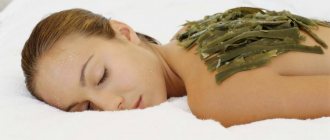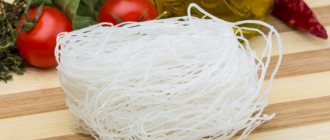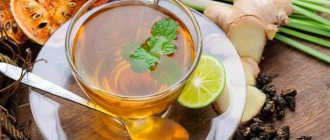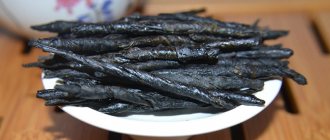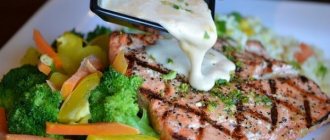Available in both white and brown colors, it is known for its nutty taste and pleasant aroma.
However, you may want to know if this long grain rice is healthy and how it differs from other types of rice.
This article takes a detailed look at basmati rice, its nutritional value, health benefits and any disadvantages.
Useful properties of basmati
The Indian variety of basmati rice is convenient because it cooks perfectly and does it quickly. No “healthy lifestyle” rice such as red and black can compare with it in speed and ease of preparation. Few people know, but basmati comes in two types - brown or “cargo basmati” and white. The first can be purchased at health food stores. Cargo is the unhusked grains of basmati rice.
They “inherit” the beneficial properties of any product with grain shells:
- help maintain healthy digestion due to its richness in fiber;
- help you feel full faster and withstand various dietary restrictions. Cereal hull fibers can absorb water. This allows 3-4 tablespoons of cargo basmati to saturate in a way that its white counterpart never dreamed of;
- are a rich source of B vitamins, especially vitamin B9. Brown basmati is healthier for the nervous system than white. White is also good, but it contains slightly less vitamins;
- Basmati brown is also good for our skin, it is often called a beauty product. True, the effect of this rice is purely indirect; it helps cleanse the intestines, which, in turn, eliminates various skin problems.

White basmati is easily digestible. It gives us about 70% of our daily carbohydrate intake from just 3-4 moderate servings. Many people in the sports world simply cook themselves a certain amount of rice per day, and do not buy additional bread, biscuits, etc., to simplify the process of consuming carbohydrates.
When a person eats white basmati, he experiences fewer digestive problems than when he eats plenty of fiber from rice and legume sources. Newcomers to healthy lifestyle may be unpleasantly affected by flatulence from fiber-rich foods. True, this phenomenon quickly passes. In just a couple of months everything will be back to normal, especially if you don’t go overboard with the 25 g of allowed fiber per day. This is exactly what is contained in half a glass of cooked brown rice.
White rice in all its forms and manifestations is good for nutrition for athletes. It is digested faster than brown and can be eaten in frankly large quantities. So citizens who are passionate about bodybuilding actively eat it “in bulk”, simply because, along with pasta, it is the most trouble-free carbohydrate food for absorption.
Basmati is good with both vegetables and protein products. And only complete fans of separate nutrition do not eat it along with protein. But their diet cannot be called healthy from the point of view of modern medicine.
What are the benefits of “aged” or “seasoned” basmati? Its value lies in its interesting aroma and pleasant taste, that’s the whole secret.
Basmati rice can also be found...in body and face scrubs and products for oily skin. Sometimes flour from this rice is mixed into masks for oily skin. And if you are completely interested in ethnic cosmetology, you will find it in an analogue of powder from oriental beauties. Of course, Western cosmetology will not advise you to smear rice flour on your face, but adding it to masks for oily and problem skin is very helpful. Fortunately, rice flour absorbs other ingredients well and helps fight excess sebum secretion.
Where to buy Indian basmati rice
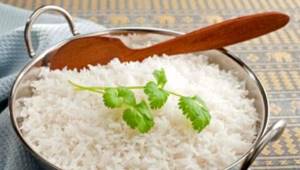
You can buy basmati anywhere. Today, packs of it are sold in any supermarket. But it's worth keeping the following in mind:
- All basmati rice in our country is exported, which means it has experienced “adventures” during delivery. Among them there are both harmless pouring and airing, and not so useful manipulations - sprinkling with talcum powder to prevent caking, treatment with insecticides against parasites and fungi, and sometimes calcination. As a result, almost all transported rice is an empty side dish without any vitamins. Typically, vitamins are added to such a product during packaging, simply by treating the rice with a fortified liquid. Of course, the result is not the most useful in the world;
- Therefore, it is recommended to buy basmati with “organic” stickers; this type is brought to us already packaged, and there is a greater chance that the grains did not encounter either talc or insecticides during delivery to the consumer.
Chemical composition and calorie content
The product is very high in calories: 100 grams of boiled basmati rice contains 350-370 kilocalories. This is due to the high carbohydrate content. Therefore, if consumed frequently, it can cause obesity.
Basmati contains:
- fiber that improves digestion;
- folic acid, necessary for the production of a sufficient amount of hemoglobin and is an excellent remedy for the prevention of anemia;
- iron, which is part of hemoglobin;
- potassium, which is involved in the work of the heart muscle;
- Ribovalfine (vitamin B2), necessary to strengthen the body's immune defense. This vitamin is also necessary for the beauty of skin, hair and nails.
Important! Basmati does not contain cholesterol, so it is recommended to be consumed if you are obese (in small quantities). To get rid of excess weight, it is advisable to use unpolished varieties.
How to cook basmati correctly
Proper preparation of basmati differs in only one aspect. Unlike any other rice, it is poured with 1.5 glasses of water per glass of cereal, and not two. The reason is that everyone wants to see this snow-white rice fluffy. To soak or not? It’s a matter of taste; some people think that soaked basmati produces an unappetizing semi-liquid mush. Others think that it’s okay, just let it lie in the water for a while and absorb some of it.
Basmati is usually soaked for 4 hours, then washed until the water becomes light, after which it is poured with 1.2 glasses of water and boiled as usual. In general, cooking in a regular saucepan is no different from manipulating other types of rice - the product is placed in water so that it completely covers the grains and brought to a boil over high heat. Then turn down the heat and cook until the water boils away.
In a slow cooker, cook basmati according to the instructions for rice, reducing the amount of water added to the bowl by half a glass and the cooking time by 10 minutes. In a steamer, this type of rice is usually simply steamed for 20 minutes.
Indian rice flour is made from basmati. To prepare it, the rice is simply processed in a regular coffee grinder. The result will be coarse flour. And for those who do not have enough protein in their regular diet, you can mix it with rice protein from vegetarian series.
How to cook fluffy rice as a side dish
You need to learn how to cook Basmati rice correctly.
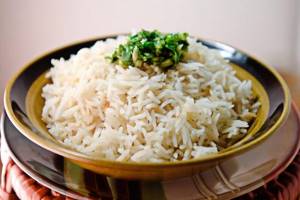
Ingredients:
- rice - 1 mug Basmati;
- water – 2 mugs.
Preparation:
- Rinse the cereal so many times that the liquid remains completely transparent.
- Boil water and add grains. Set the fire to maximum. Cover with a lid. Cook for 5 minutes. Turn off the flame.
To ensure that the temperature regime is not disturbed and the cereal is perfectly cooked, it is forbidden to open the lid during cooking. When choosing a cooking container, calculate the volume. The grains will increase 2.5 times.
Basmati rice recipes
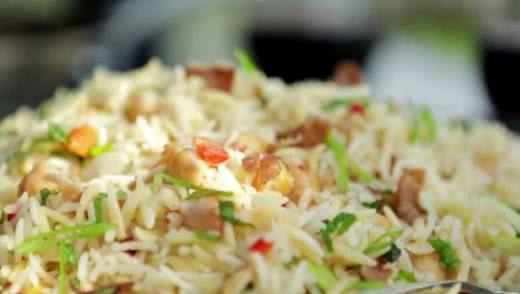
There are not so many traditional recipes. Basmati rice can be used in all common dishes. Here are recipes from different cuisines of the world.
Pancakes
1 cup basmati rice, 1 cm ginger root, 2 whites, 1 egg, 1-2 tablespoons milk, a little cinnamon, sweetener to taste, coconut oil or ghee for frying.
Pass the rice through a coffee grinder. If it is not there, first cook as usual, then grind with a blender. Mix all the ingredients of the recipe in a deep cup, heat the pancake maker, grease with oil and fry the pancakes on both sides. You can also cook them in silicone form in a microwave oven, then the process will take about 14 minutes at a power of 600 W.
Rice pudding
1 cup basmati, half cup raisins, cinnamon, fresh or ground ginger, 1 egg, 150 ml almond milk, 1-2 tablespoons cornstarch, pudding seasoning mix, mold, and optional sweetener and imitation powdered sugar.
Boil the rice, then mix all the ingredients except the raisins with a blender and blend until smooth, pour in the raisins, and pour the mixture into the mold. Bake in an oven preheated to 180 degrees for 40-50 minutes. Check readiness with a wooden toothpick.
Spicy Basmati Rice
1-2 bell peppers, 1 cm red hot pepper, 1 cup rice, for dressing - 2 tablespoons of tomato sauce without added sugar, 1 tablespoon olive oil and a little garlic.
Cook rice as usual. Heat the ingredients for the sauce in a deep frying pan and stir. Add the cooked rice, cover with a lid, turn off the heat and leave to cook until done for 10-15 minutes.
With vegetables in a slow cooker
In a slow cooker you will get a tasty, healthy, dietary dish.
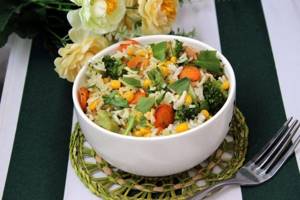
Ingredients:
- Basmati rice – 2.5 multi-cups;
- water – 5 multi-glasses;
- corn - can;
- olive oil;
- turmeric – 0.5 teaspoon;
- carrot – 1 pc.;
- paprika – 0.5 teaspoon;
- onion – 1 pc.;
- green peas - 0.5 cups;
- bell pepper – 1 pc.
Preparation:
- Chop the onion. Chop the carrots. Chop the pepper. Grate the carrots.
- Set the “Frying” mode. Pour oil into the bowl. Place vegetables. Fry.
- Wash the rice grains. Place in a bowl. Add peas, then corn.
- Fill with the volume of water indicated in the recipe. Sprinkle with turmeric and paprika. Add some salt. Switch the mode to “Grain”. Timer – 35 minutes.
Harm of basmati

Usually, various popular sources about weight loss “forbid” us to eat basmati. Their logic is this: rice has a high glycemic index, quickly increases blood sugar levels, which means that its consumption is fraught with an increase in appetite and cannot be considered a healthy strategy if you are losing weight.
If this is 100% true for anyone, it is for people with diabetes. Healthy people can eat white rice in moderation. As long as their diet does not consist of only white rice, they are on the right track. The fact is that rice is rarely a separate dish. We eat it with vegetables, meat, fish or other foods. Mixing itself lowers the glycemic index of rice, making it “safe” even for those who cannot control their appetite.
Well, information about vitamins is generally relative. What is healthier, brown rice enriched with vitamins, ordinary “Krasnodar” rice with traces of natural vitamins, or basmati with a minimum of vitamins, but with an interesting aroma? Each person decides this question for himself. And so, rice practically does not cause allergies, in its white “exfoliated” form it is suitable for people with gastrointestinal problems and can perfectly replace some of the side dishes we are accustomed to.
Rice diet for weight loss
How to pickle green peas for the winter. How to cook delicious and healthy pumpkin compote. Basmati pilaf turns out crumbly and very aromatic.
Fatty lamb juice is perfectly absorbed into the cereal. It is advisable to use a cauldron when cooking. It is distributed throughout the world. And this is not surprising. The unique taste and aroma, the ability to remain crumbly and retain its shape, as well as a huge amount of minerals and vitamins in the composition make Basmati rice a tasty and healthy product. Get new comments by email.
Contents of the article Basmati rice: what is it Difference from regular rice Composition and calorie content Benefits and harm to health How to cook and serve Shepherd's pie Chicken curry Pilaf with lamb Conclusion.
Share this article. Click to cancel reply. Your name. To prevent rice from harming the body and promoting weight loss, you should not eat it more than once a week, while monitoring the total carbohydrate content in your diet. Basmati can be consumed in larger quantities by people engaged in physical labor and athletes exposed to serious stress. Children under three years of age should not be given dishes with basmati: it can cause colic or indigestion.
Children over three years old can include this rice in their diet, provided they do not have food allergies.
general characteristics
Rice should be given, starting with small quantities of one or two teaspoons, mixed with boiled vegetables or regular white rice. With up to kilocalories per gram, basmati rice is an excellent source of energy and folic acid.
Therefore, in the absence of food allergies, it can become part of a pregnant woman’s diet. You can eat dishes with basmati no more than twice a week, otherwise a woman can gain a lot of extra pounds, which will complicate childbirth. Basmati is not contraindicated during breastfeeding, but you need to check if the baby is allergic to this rice. If, after a nursing mother has eaten a dish with basmati, the baby develops colic, becomes restless or breaks out in a rash, rice should be abandoned.
Rice gives you a quick feeling of fullness, which is why many nutritionists recommend it to people who want to lose weight. However, due to its high calorie content, excessive consumption of rice can cause you to gain extra pounds. To lose weight, you can eat basmati in small amounts in the first half of the day so that the calories received have time to turn into energy. The bulk of basmati sold in the world is produced in India and Pakistan.
These countries export tens of millions of tons of product annually. Basmati is quite expensive: its production requires effort and enormous expenses. However, due to the popularity of the product, these costs are well worth it. Basmati produces a small amount of crop. Typically, crops are subject to many diseases, as well as insect attacks. Therefore, it was necessary to create numerous hybrid varieties that are resistant to unfavorable conditions and pests.
During growth, rice requires very high humidity and temperatures of 25 to 35 degrees, as well as little wind. If weather conditions change, the taste of basmati deteriorates and its yield is significantly reduced.
Basmati rice is a tasty and healthy product. The article will talk about this delicious cereal, its benefits, calorie content and use as a product for weight loss.
Basmati rice, the benefits and harms of which are described in the article, is very good for health in moderation. Dishes with it have a unique taste and aroma.
Vitamins and minerals contained in basmati
Vitamins:
choline – 85 mg, PP – 5.3 mg, H – 12 mcg, E – 0.8 mg, B9 – 35 mcg, B6 – 0.54 mg, B5 – 0.6 mg, B2 – 0.08 mg, B1 – 0.34 mg, PP – 3.8 mg.
Minerals:
nickel – 51.6 µg, aluminum – 912 µg, cobalt – 6.9 µg, silicon – 1240 mg, vanadium – 400 µg, boron – 224 µg, molybdenum – 26.7 µg, fluorine – 80 µg, chromium – 2.8 µg, selenium – 20 µg, manganese – 3.63 mg, copper – 560 mg, iodine – 2.3 mcg, zinc – 1.8 mg, iron – 2.1 mg, sulfur – 60 mg, chlorine – 133 mg, phosphorus – 328 mg, potassium – 314 mg, sodium – 30 mg, magnesium – 116 mg, calcium – 40 mg.
Read useful information about other cereals:
Oatmeal Millet Bulgur Buckwheat Corn grits Quinoa Rice Pearl barley
The nutritional value
Although the exact nutrients vary depending on the specific type of basmati, each serving is typically high in carbohydrates and calories, as well as micronutrients such as folate, thiamine and selenium.
One cup (163 grams) of cooked white basmati rice contains ():
- Calories: 210 kcal
- Protein: 4.4 g.
- Fat: 0.5 g.
- Carbohydrates: 45.6 g.
- Fiber: 0.7 g.
- Sodium: 399 mg
- Folate: 24%
- Thiamine: 22%
- Selenium: 22%
- Niacin: 15%
- Copper: 12%
- Iron: 11%
- Vitamin B6: 9%
- Zinc: 7%
- Phosphorus: 6%
- Magnesium: 5%
In comparison, brown basmati rice contains slightly more calories, carbohydrates and fiber. It also provides more magnesium, vitamin E, zinc, potassium and phosphorus ().
Basmati rice is typically high in carbohydrates and micronutrients such as thiamine, folate and selenium.


